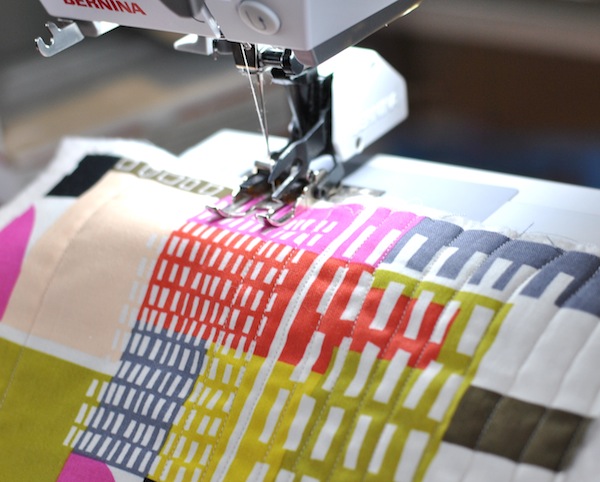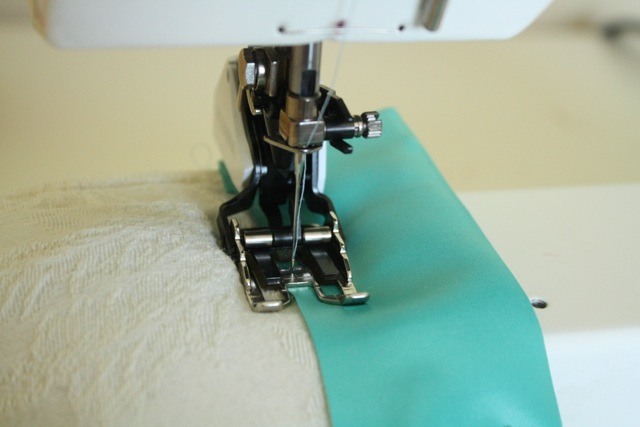 Photo via Lindsay Sews
Photo via Lindsay Sews
What is a walking foot?
A walking foot, also called a quilting foot, is a sewing machine accessory with built-in feed dogs to guide two or more layers of fabric evenly through your machine. It feeds the backing, batting, and quilt top through the machine evenly, and can be used to quilt gentle curves or to machine quilt in the ditch. A walking foot also works well for:- Straight-line quilting
- Adding a quilt binding
- Quilting with minky or other slippery or knit fabrics
- Sewing plaids
 Photo via Gretchen Hirsch
Photo via Gretchen Hirsch
What should I look for when purchasing a walking foot?
It’s most important to buy a walking foot that is compatible with your sewing machine, so make sure you know the make and model when you are shopping. If you cannot get the correct foot from your manufacturer, a generic model may be available. You’ll want to know if your machine is a high-shank or low-shank machine, so check the manual. Some walking feet also come with a channel guide attachment, which fits on the side and helps quilters with parallel lines. Finally, look for an open-toe walking foot if you do a lot of stitch-in-the-ditch, because this will help you see exactly where the needle hits the fabric. Quilting foot with a channel guide. Photo via Sew Well Maide
Quilting foot with a channel guide. Photo via Sew Well Maide
Does a walking foot ever wear out or break?
Because a walking foot is a mechanical foot, yes, it can wear out or even break with use. Whether you sew with a plastic or metal walking foot, the bottom part of the foot may break off. A part of the plastic may become chipped, or the foot itself can break if you make the mistake of trying to sew in reverse. If you notice a crack in the plastic housing that surrounds the walking foot, you may be able to replace just the plastic case. Contact your dealer for a replacement part; when possible, it’s best to buy directly from your sewing machine dealer and not purchase a generic version. Generic walking feet can sometimes be cheaply made and they tend to break more often than feet from your sewing machine manufacturer. Photo via Lilypad Quilting
Photo via Lilypad Quilting
Does a walking foot require any maintenance to keep it working properly?
Just as you clean your sewing machine, clean your walking foot to keep it free of fabric dust and other remnants. If you have persistent problems with your walking foot or your sewing machine, it may be time to take it into your local sewing machine dealer or repair shop to be cleaned and serviced. Photo via Canoe Ridge Creations
Photo via Canoe Ridge Creations

how can i know if it is a low shank or what